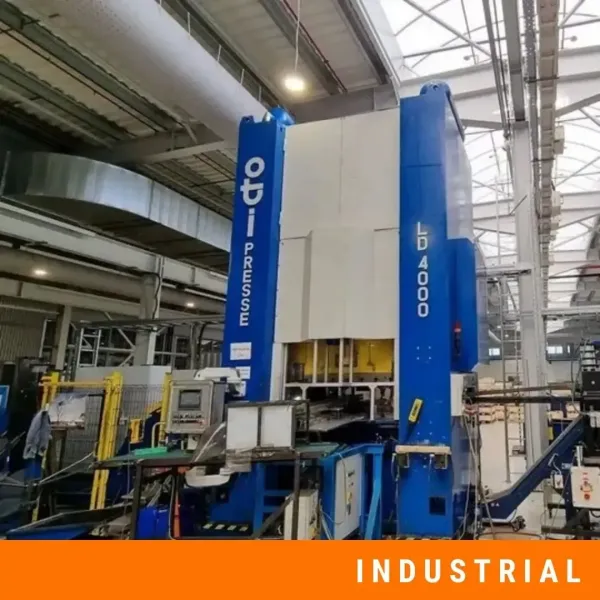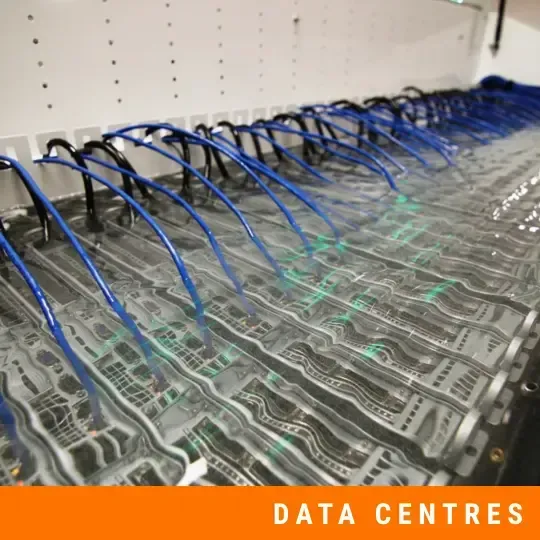Balancing Cooling Needs with Acoustic Control
Data centres depend on precise cooling systems to keep servers and other IT equipment operating safely. Stable temperatures prevent overheating, protect hardware, and maintain uninterrupted service. Without effective cooling, equipment failure can lead to costly downtime and, in worst-case scenarios, even data loss.
The difficulty is that cooling systems generate continuous noise. Systems such as fans, chillers, and ventilation ducts produce sound and vibration that affect staff and nearby workplaces, as well as create compliance risks with environmental noise regulations. In such facilities, this type of noise must be managed carefully.
Balancing cooling requirements with acoustic control is a key part of data centre design and operation. Effective solutions allow airflow and temperature control to remain efficient while lowering the impact of noise on people, equipment, and the surrounding environment.
Why Cooling and Acoustics Often Conflict
In every data centre, cooling is the backbone. Servers create large amounts of heat, and cooling systems must move constant volumes of air to keep equipment stable. The stronger the cooling demand, the louder the noise produced.
The conflict comes from the way cooling systems work:
- Fans and air handlers create broadband noise as they move high volumes of air.
- Chillers and cooling towers produce low-frequency rumble and vibration that can travel through floors and walls.
- Ductwork carries sounds across rooms.
- External units on rooftops or near facades leak noise into the environment.
Such acoustic issues can affect staff health, interfere with nearby workspaces, and lead to breaches of environmental noise regulations. In data centres, where 24/7 reliability is non-negotiable, balancing cooling performance with acoustic control is essential for both compliance and operational continuity.
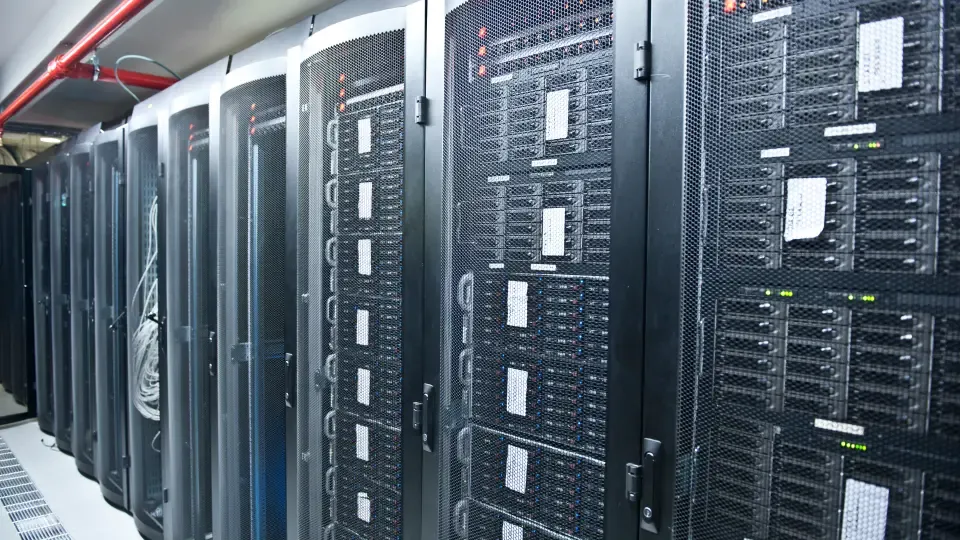
Common Sources of Cooling-Related Noise
Every data centre has unique cooling demands, but the main sources of noise are usually the same. Identifying these sources makes it easier to apply the right acoustic solutions.
Chillers and Cooling Towers
Chillers and cooling towers remove large amounts of heat from servers. They create low-frequency rumble and vibration that can spread through floors, walls, and structures. Without isolation, this vibration may disturb nearby areas or sensitive equipment.
HVAC Fans and Air Handlers
Fans and air handling units run constantly to keep airflow stable. The movement of high volumes of air produces broadband noise. This type of sound is continuous and can affect concentration and working conditions for staff.
Ductwork and Ventilation Paths
Air ducts carry both air and noise. Without treatment, ductwork can amplify sound and transmit it across different rooms in the facility. This creates background noise in spaces that are not directly connected to the cooling system.
Rooftop and External Units
Many data centres place cooling units on rooftops or outdoor areas. While effective for heat removal, this setup often leaks noise into the environment. It can cause complaints from surrounding buildings and increase the risk of breaching environmental noise limits.
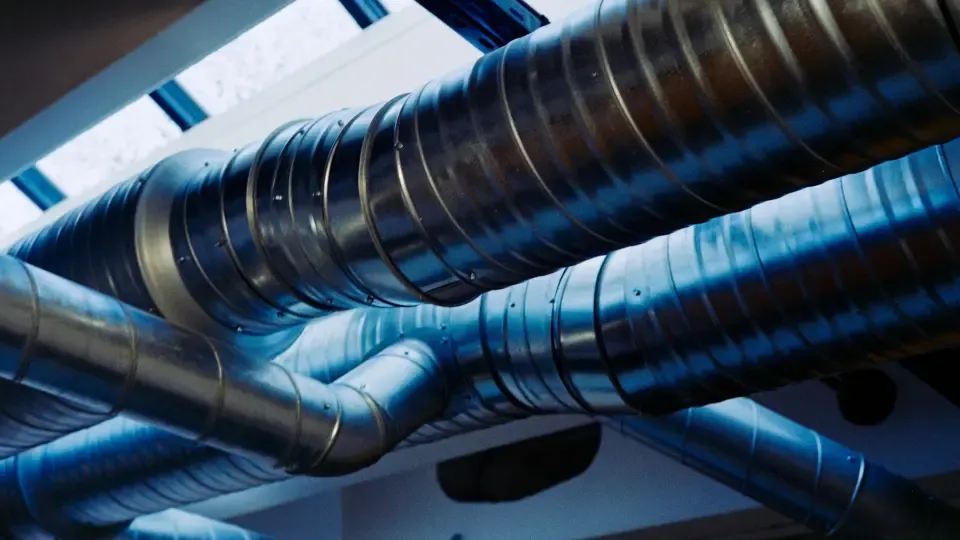
The Impact of Cooling Noise on Facilities
Noise from cooling systems in data centres is not only an acoustic problem. It has direct effects on staff, equipment, and compliance with legal standards. If not managed, these effects can increase costs, reduce efficiency, and create risks for operators.
Staff Health and Concentration
Continuous background noise from fans, chillers, and ducts makes it harder for staff to focus. Over long shifts, this leads to fatigue, stress, and lower productivity. In some cases, noise exposure can also affect hearing health if sound levels exceed recommended levels.
Sensitive Processes and Equipment
Data centres rely on precise airflow and stable vibration conditions. Excessive noise and vibration from cooling systems can disrupt cleanroom airflow, affect testing environments, or reduce the accuracy of sensitive monitoring equipment used in critical IT and telecom systems.
Compliance and Reputation
Noise exposure is regulated across the EU, UK, and the United States.
- EU Directive 2003/10/EC sets minimum health and safety requirements for noise exposure at work.
- UK Control of Noise at Work Regulations (2005) define employer responsibilities to protect staff.
- OSHA standards in the US establish exposure limits and hearing conservation measures.
If an organisation fails to manage noise from cooling systems, it can result in regulatory fines, reputational damage to the company, and community complaints if external noise exceeds local environmental limits.

Acoustic Solutions for Cooling Systems
Cooling noise can be reduced without harming performance. With the right acoustic solutions, data centres can maintain airflow, protect equipment, and stay compliant with regulations.
Acoustic Louvres
Acoustic louvres are used for ventilation openings, cooling towers, and mechanical plant rooms. They allow large volumes of air to pass through while minimising noise. DECIBEL AL® louvres are durable, weather-resistant, and available in modular sizes, making them easy to install on facades or support structures.
Acoustic Silencers and Duct Attenuators
Duct silencers reduce noise inside air ducts and exhaust systems, keeping airflow efficient but quieter. DECIBEL LW REG attenuators and DECIBEL Box Silencers combine absorbing and insulating technology to reduce fan and compressor noise. They are especially useful where standard silencers cannot be installed due to space limits.
Acoustic Attenuators for Heavy Machinery
Where chillers, compressors, or pumps create continuous low-frequency noise, acoustic attenuators absorb and block sound waves before they spread. DECIBEL solutions use galvanised steel and high-performance acoustic fill to ensure durability and strong noise reduction in demanding environments.
Acoustic Doors and Panels
Noise from cooling systems can leak into offices, testing labs, or control rooms. Installing PM acoustic doors and PZP™ panels helps block transmission and keeps critical rooms quiet. This is important in facilities where staff must monitor systems or perform precision tasks near noisy mechanical equipment.
Anti-Vibration Mounts and Flooring
Vibration from chillers and cooling towers often spreads through the building structure. SMR spring mounts and floating floor systems isolate heavy machinery, preventing vibration from travelling into data halls or neighbouring buildings.
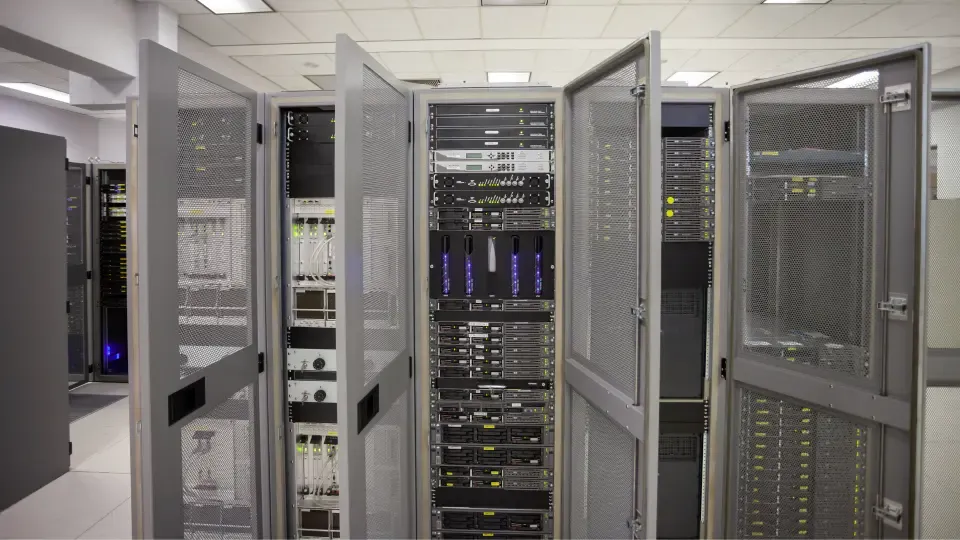
Cooling systems are essential for data centres, but their noise must be controlled. By combining cooling efficiency with acoustic control, facilities can maintain stable operations without sacrificing comfort or safety.
Solutions such as DECIBEL AL® louvres, LW REG attenuators, Box Silencers, PM acoustic doors, and SMR spring mounts show that cooling and acoustics do not have to be in conflict. These systems allow airflow and cooling performance to be strong, while keeping noise at safe and compliant levels.
Contact DECIBEL to design or upgrade your data centre with solutions that balance cooling needs and acoustic control.

